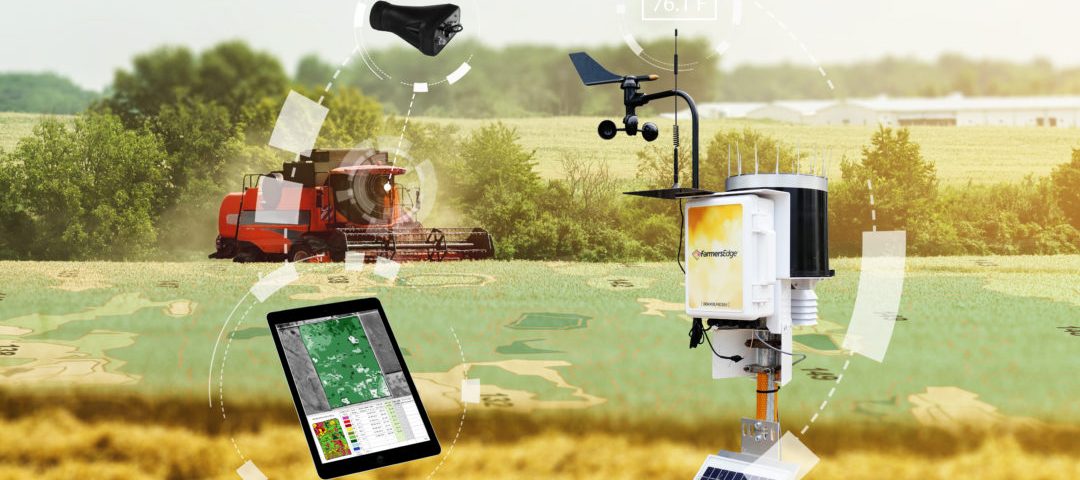AgriNation News Network
New Delhi | 31 Jan 2018
Shifting weather patterns such as increase in temperature, changes in precipitation levels, and ground water density, can affect farmers, especially those who are dependent on timely rains for their crops. Leveraging the cloud and AI to predict advisories for sowing, pest control and commodity pricing, is a major initiative towards creating increased income and providing stability for the agricultural community.
“Indian agriculture has been traditionally rain dependent and climate change has made farmers extremely vulnerable to crop loss. Insights from AI through the agriculture life cycle will help reduce uncertainty and risk in agriculture operations. Use of AI in agriculture can potentially transform the lives of millions of farmers in India and world over,” says Anil Bhansali, CVP C+E and Managing Director, Microsoft India (R&D) Pvt. Ltd.
AI-based sowing advisories lead to 30% higher yields
“Sowing date as such is very critical to ensure that farmers harvest a good crop. And if it fails, it results in loss as a lot of costs are incurred for seeds, as well as the fertilizer applications,” says Dr. Suhas P. Wani, Director, Asia Region, of the International Crop Research Institute for the Semi-Arid Tropics (ICRISAT), a non-profit, non-political organization that conducts agricultural research for development in Asia and sub-Saharan Africa with a wide array of partners throughout the world.
Microsoft in collaboration with ICRISAT, developed an AI Sowing App powered by Microsoft Cortana Intelligence Suite including Machine Learning and Power BI. The app sends sowing advisories to participating farmers on the optimal date to sow. The best part – the farmers don’t need to install any sensors in their fields or incur any capital expenditure. All they need is a feature phone capable of receiving text messages.
To calculate the crop-sowing period, historic climate data spanning over 30 years, from 1986 to 2015 for the Devanakonda area in Andhra Pradesh was analyzed using AI. To determine the optimal sowing period, the Moisture Adequacy Index (MAI) was calculated. MAI is the standardized measure used for assessing the degree of adequacy of rainfall and soil moisture to meet the potential water requirement of crops.
The real-time MAI is calculated from the daily rainfall recorded and reported by the Andhra Pradesh State Development Planning Society. The future MAI is calculated from weather forecasting models for the area provided by USA-based aWhere Inc. This data is then downscaled to build predictability, and guide farmers to pick the ideal sowing week, which in the pilot program was estimated to start from June 24 that year.
Ten sowing advisories were initiated and disseminated until the harvesting was completed. The advisories contained essential information including the optimal sowing date, soil test based fertilizer application, farm yard manure application, seed treatment, optimum sowing depth, and more. In tandem with the app, a personalized village advisory dashboard provided important insights into soil health, recommended fertilizer, and seven-day weather forecasts.
Pest attack prediction enables farmers to plan
Microsoft is now taking AI in agriculture a step further. collaboration with United Phosphorous (UPL), India’s largest producer of agrochemicals, led to the creation of the Pest Risk Prediction API that again leverages AI and machine learning to indicate in advance the risk of pest attack. Common pest attacks, such as Jassids, Thrips, Whitefly, and Aphids can pose serious damage to crops and impact crop yield. To help farmers take preventive action, the Pest Risk Prediction App, providing guidance on the probability of pest attacks was initiated.
In the first phase, about 3,000 marginal farmers with less than five acres of land holding in 50 villages across in Telangana, Maharashtra and Madhya Pradesh are receiving automated voice calls for their cotton crops. The calls indicate the risk of pest attacks based on weather conditions and crop stage in addition to the sowing advisories. The risk classification is High, Medium and Low, specific for each district in each state.




